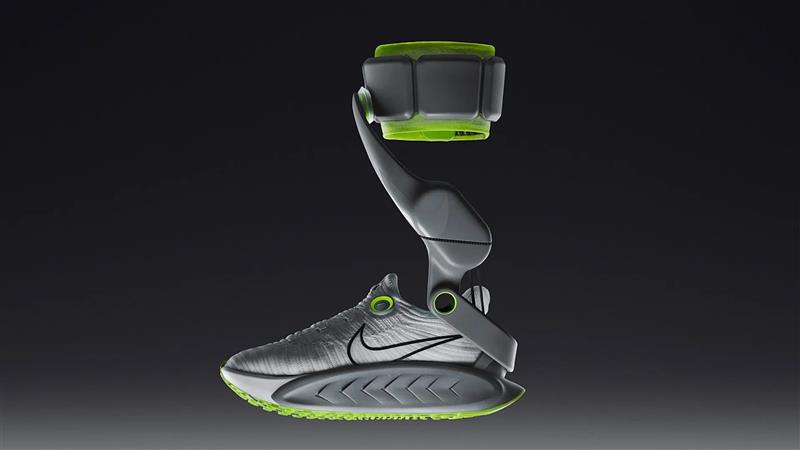 Credit: Nike
Credit: Nike On October 23, Nike, in collaboration with robotics startup Dephy, unmasked its new self-lacing Amplify shoe, a controversial “electric buke for your feet” that was slammed as a cynical attempt to technologically dope the average runner instead of optimizing athlete performance.
The new Amplify shoes are packed with micro-motors and AI cushioning and designed to automate optimal form and pace.
Is Nike and Dephy’s creation the new revolutionary accessibility tool, or the end of authentic, human-powered running?
The concept is built to augment natural lower leg and ankle movement, using a light motor, drive belt, and rechargeable cuff battery that integrates into a carbon fiber–plated running shoe. It can be worn with or without the power system, giving users the freedom to choose how much help they want.
When Technology Becomes a Teammate
The Nike Amplify shoes system was tested by more than 400 athletes, across nine prototypes, logging over 2.4 million steps. Many said it made running uphill feel like gliding across flat ground. This project is pioneering a new frontier of power running shoes, combining mechanical precision and human movement.
“At its core, Project Amplify is about seamlessly adding a little more power to your stride,” said Michael Donaghu, Nike’s Vice President of “Create the Future.”
Moreover, Nike’s engineers are using data-informed design, similar to how high-level robotics learn and adapt, to augment the natural rhythm of running.
Power shoes for running function as shoes that adapt to their wearer instead of the other way around. Robotic shoes are part of Nike’s long legacy in combining sports and technology.
Innovation of Shoes
Project Amplify is also Nike’s latest venture into adaptive design, following releases like the Nike adaptive fit shoes, which automatically adjust for both comfort and performance. The new powered system adds movement assistance to the same spirit of individual innovation.
Meanwhile, other companies are riding the wave of sneaker innovation.
Shift Robotics has debuted robot sneakers that make walking faster, while Swiss scientists have created shoes that generate electricity from motion. The future of the business seems clear: tech is no longer an accessory but an active partner in movement.
For Nike, that means turning the concept into reality. The company has already developed digital shoes from Nike, a line that explores digital integration and performance tracking. Project Amplify pushes it with mechanical energy, a combination of robotics, sensors, and sport science.
https://twitter.com/search?q=robotic%20shoes&src=typed_query&f=top
This marks an evolution from traditional design to digitally made running shoes, where material design and code converge to render a smarter, faster, and more adaptive result.
Project Amplify also highlights the broader shoes innovation in the industry, which is a shift from passive products to intelligent systems that adapt in real time. But as technology progresses, so do the questions: do makers want to innovative shoes or completely redefine what an athlete is?
In that sense, Nike continues to innovate running shoes ahead by balancing ambition with humanity, designing products that both enhance and challenge our physical limits.
Finally, Project Amplify robotic shoes ushers in a new era of Nike tech shoes at the intersection of power, performance, and robotics. Yet beneath the excitement lies a subtle tension.
If the shoes start to run for us, what happens to the feeling of running itself? Nike’s robotic sneakers may not be so much an invention as it is the moment were innovation begins to question the nature of effort.
Inside Telecom provides you with an extensive list of content covering all aspects of the tech industry. Keep an eye on our Intelligent Tech sections to stay informed and up-to-date with our daily articles.